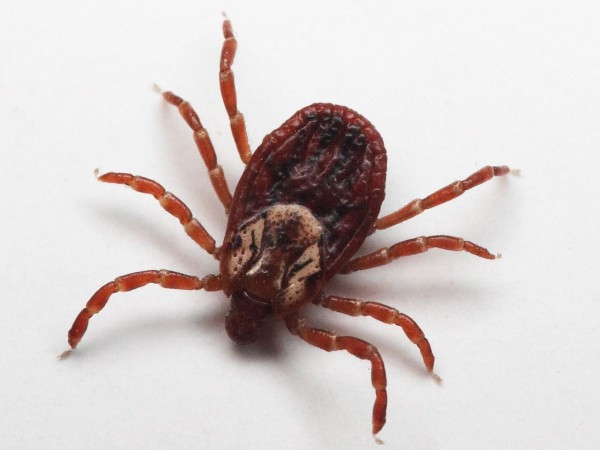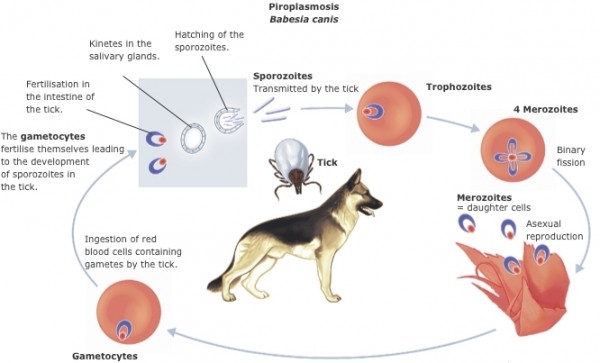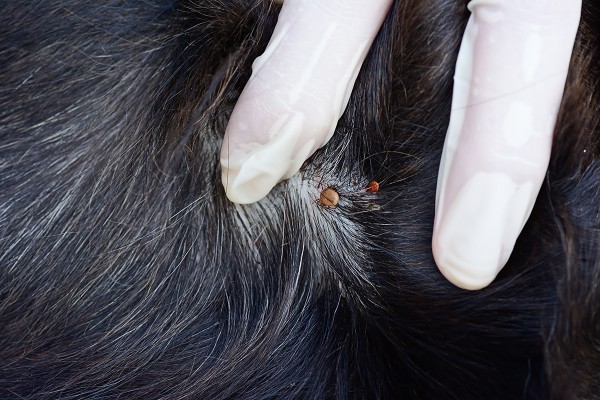Dog owners, walkers and sitters are on high alert after a new tick-borne disease outbreak in Harlow, Essex.
The disease, known as Babesiosis, is an infectious malaria-like parasitic disease originating from cattle in North America.
Professor Richard Wall, Professor of Zoology at the University of Bristol, tracks the rising problems caused by ticks in a study called The Big Tick Project. He commented:
“People who work on ticks and tick-borne diseases are concerned about this outbreak. It could be the tip of the iceberg. If it spreads quickly throughout the UK then it is going to be a very significant problem, but we don’t have enough info at this stage to make a prediction about how quickly this will happen.”
“It’s highly unlikely that the problem will now disappear, we have the vectors, we have the pathogens established in the UK.”
Babesiosis – what you need to know
What happens to my dog?
Babesia parasites replicate in red blood cells and break down the cells. As the red blood cells are destroyed, haemoglobin is released. As the body can’t keep up with producing red blood cells to replace the ones being destroyed, this leads to anaemia and jaundice.
In addition to this, severe inflammation occurs causing blood clots, and the parasite can enter the central nervous system.
Some severe cases have resulted in lung damage, liver disease and death.

Ticks act as a vector for the Babesia parasite – infecting a dog through its bite. Source
How do dogs get infected?
The disease is tick-borne, however, infection can also be spread through infected blood transfusions and dog bites.
Ticks host the Babesia parasite and transmit the infection through their bite. The incubation period can be an average of two weeks.
Symptoms
Even though the incubation period is (on average) two weeks, some cases may take months, or even years to diagnose.
Symptoms include:
- Lethargy
- Lack of appetite
- Fever
- Weight loss
- Orange or red coloured urine
- Pale gums or tongue
- Jaundice (yellowing of the eyes)
- Weakness
- Discoloured stools
- Enlarged spleen
- Enlarged lymph nodes
- Enlarged abdomen

The Babesis life cycle. Source
Diagnosis
If you suspect your dog may have Babesiosis you must see your Vet immediately.
Your Vet will need to know your dog’s full medical history, history of symptoms and any events that may have exposed your dog to the disease (dog bites, tick removals etc.)
After a physical examination your Vet will run a complete blood count, blood chemical profile and urinalysis.
A Wright’s Stain can also distinguish blood cells, while Immunofluorescent Antibody Tests (IFA) detect the antibodies in serum and other bodily fluids to determine the presence of the infection.
Young dogs may not have any detectable antibodies to show the infection, so they may require the more sensitive Polymerase Chain Reaction (PCR) Test. This shows the differentiation between the subspecies and the species of Babesia DNA in the biological sample.
Treatment
- Drugs used to treat Babesiosis include:
- Imidocarb Diproprionate – to treat morality in large Babesia infection.
- Atovaquone – to treat vomiting, salivating and diarrohea.
- Azithromycin – in combination with Atovaquone to treat Babesia gibsoni.
- Diminazene Aceturate – to treat B canis.
- Drug therapy doesn’t often clear the parasite, it mearly relieves the symptoms. The drugs may not always be effective and can have serious side effects.
- Severely ill dogs will be hospitalised and require a blood transfusion or fluid therapy.

Prevention is key. Be wary of wooded and grassy areas.
Prevention
Prevention is the best course of action.
- Avoid heavily wooded areas
- Check your dog daily for ticks
- Keep your garden neat and tidy
- Remove a tick as soon as you see it
- Use a Vet-recommended tick control product such as:

Check you dog daily for ticks. Remember to check in between paws and gums too. Source
Sharing’s caring
Share this article with your friends and family to make them aware of this dangerous disease.